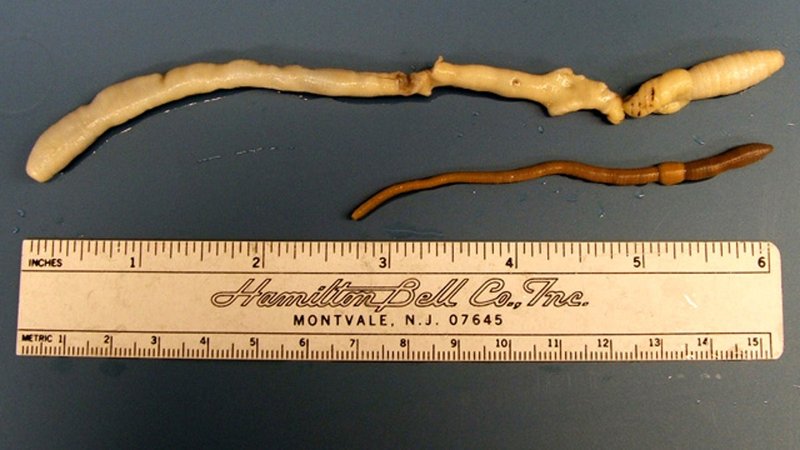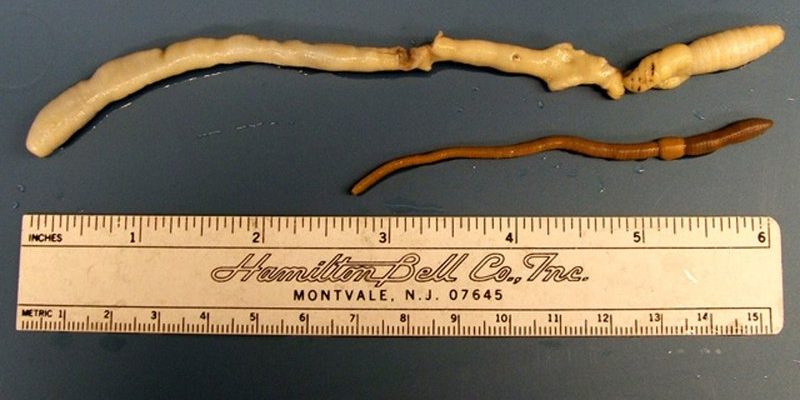
Imagine walking through a lush garden or a vibrant forest. What if the soil you’re stepping on could speak? That’s where the Giant Palouse Earthworm steps in. These earthworms help indicate the condition of the soil they inhabit, and, by extension, the overall health of the ecosystem. With their incredible sensitivity to environmental changes, these worms allow scientists to take the pulse of the land, making them superstars in the world of ecological monitoring. Let’s explore how these remarkable creatures contribute to our understanding of environmental health.
What Makes the Giant Palouse Earthworm Unique?
To truly appreciate the role of the Giant Palouse Earthworm, we need to understand what sets it apart from its more common cousins. For one, it’s not just large in size—growing up to three feet long—but it also has a very specific habitat: the Palouse region, which is known for its rolling hills and rich soil. These worms are rarely found elsewhere, making them unique indicators of their specific ecosystem.
Moreover, these earthworms possess a fascinating biology. Unlike many other earthworms that thrive in various conditions, the Giant Palouse Earthworm is specialized. It needs a specific moisture level, soil type, and temperature to survive. Think of them like the canary in the coal mine; when their population declines, it signals that something is off with their environment. This relationship between the earthworm and its habitat is essential for understanding broader ecological changes.
Their sensitivity to changes in soil composition and moisture makes them invaluable for environmental studies. When there’s a shift in agricultural practices or land use, the Giant Palouse Earthworm quickly responds to those changes. Monitoring their populations can provide researchers with critical data about soil health and potential pollutants, helping to keep an eye on the ecological balance.
The Role of Bioindicators in Environmental Monitoring
So, what exactly is a bioindicator? A bioindicator is a living organism that gives us insights into the health of an ecosystem. This concept is similar to how a doctor checks our pulse when we visit for a check-up; it provides vital information about our health. Similarly, when researchers monitor species like the Giant Palouse Earthworm, they can assess environmental conditions and contamination levels.
The beauty of using the Giant Palouse Earthworm as a bioindicator lies in its response to soil changes. Because these worms are sensitive to pollutants, soil degradation, and climate change, any significant alterations in their population can highlight the need for remediation efforts. For instance, if their numbers drop, it might suggest that farmers are using too many chemicals or that the land is becoming unhealthy.
But it’s not just about the earthworm itself. The health of these worms often reflects the health of the entire ecosystem. When researchers study them, they’re essentially looking at a window into the overall environment. This link makes bioindicators like the Giant Palouse Earthworm crucial for environmental assessments and conservation efforts.
Practical Ways to Use Giant Palouse Earthworms for Monitoring
Using Giant Palouse Earthworms for environmental monitoring can be approached in several practical ways:
- Population Surveys: Researchers can conduct regular population surveys to track numbers and distribution patterns. This involves capturing samples and analyzing them over time.
- Soil Quality Testing: By analyzing soil samples where these worms thrive, scientists can measure nutrient levels and contamination. They can study the soil’s pH, moisture, and organic matter content.
- Longitudinal Studies: Implementing long-term studies helps researchers observe how changes over years affect worm populations, leading to insights about land use and climate impacts.
These methods not only provide valuable data but also foster a greater understanding of soil health and ecosystem dynamics. By closely monitoring the Giant Palouse Earthworm throughout these processes, researchers can develop effective management strategies for sustainable land use.
Challenges in Monitoring and Conservation
Despite their importance, monitoring the Giant Palouse Earthworm comes with its own set of challenges. One major issue is habitat loss due to agricultural expansion. As farmland increases, the natural habitats that support these worms dwindle. When their homes disappear, so do they. This creates a ripple effect, impacting the entire ecosystem, which is why conservation efforts are crucial.
Another challenge is public awareness. Many people overlook the importance of earthworms in our ecosystem. Raising awareness about the Giant Palouse Earthworm and its role in environmental monitoring can help gather support for conservation efforts. Workshops, community events, and educational programs can highlight the significance of these creatures in maintaining healthy ecosystems.
Funding for research is also necessary. Without proper financial support, scientists struggle to conduct comprehensive studies. Sustainable funding ensures consistent monitoring, allowing researchers to track changes over time and respond to emerging threats promptly.
Conservation Efforts and Future Outlook
Given their ecological significance, various organizations are working to conserve the Giant Palouse Earthworm and its habitat. Conservation strategies often focus on habitat restoration, sustainable farming practices, and education programs. These strategies aim to create a balance between agricultural needs and preserving natural ecosystems.
Additionally, involving local communities in conservation efforts can foster a sense of ownership and responsibility. By participating in monitoring projects, citizens can become advocates for worm conservation, helping to protect their environment. Plus, when people understand the worm’s role as a bioindicator, they might be more inclined to support eco-friendly agricultural practices.
Looking ahead, it’s clear that the Giant Palouse Earthworm has a bright future in environmental monitoring. As researchers become more aware of the interconnectedness of ecosystems, the value of using bioindicators will only grow. By embracing this approach, we can work toward a sustainable future, where our soil remains healthy and our environment thrives.
The Giant Palouse Earthworm is more than just a fascinating creature; it’s a crucial part of our ecosystem that helps us monitor environmental health. By understanding its role as a bioindicator, we can learn much about soil quality, pollution levels, and the overall health of our landscapes.
As we face ongoing environmental challenges, embracing innovative monitoring methods, such as using the Giant Palouse Earthworm, could provide us with the data necessary to make informed decisions. With continued efforts in research, conservation, and education, these undersung heroes of the soil can help illuminate the path toward a healthier planet. Let’s keep digging deep into their story and see how we can work together to protect these critical creatures and the environments they inhabit.

